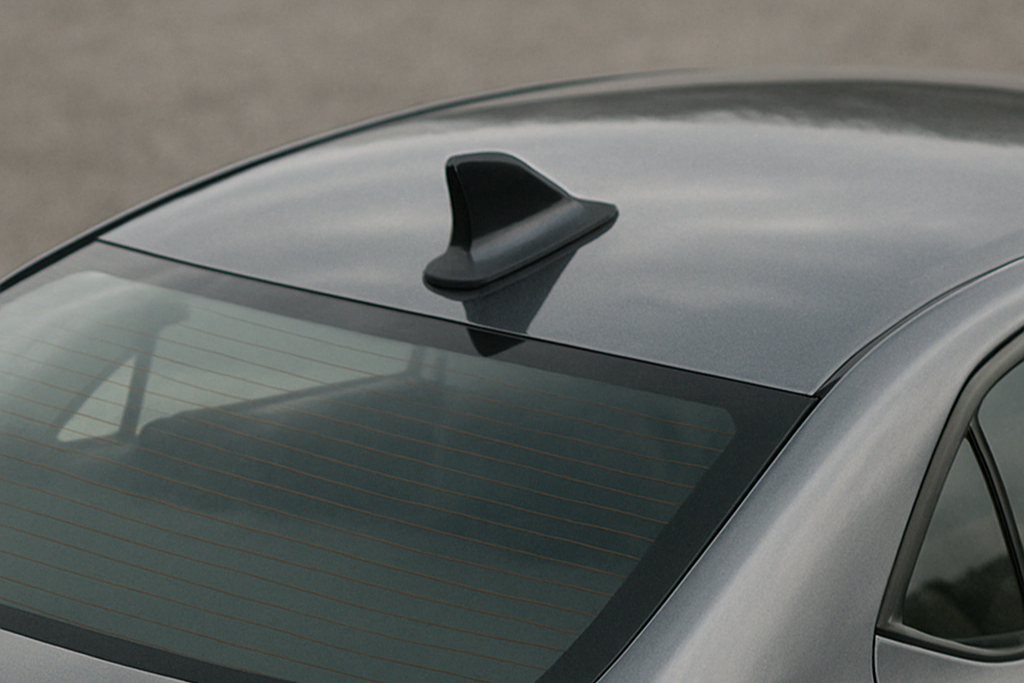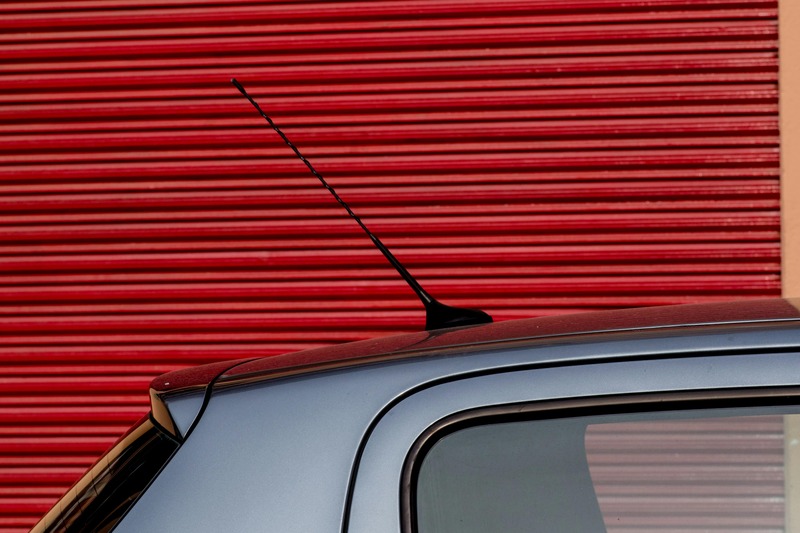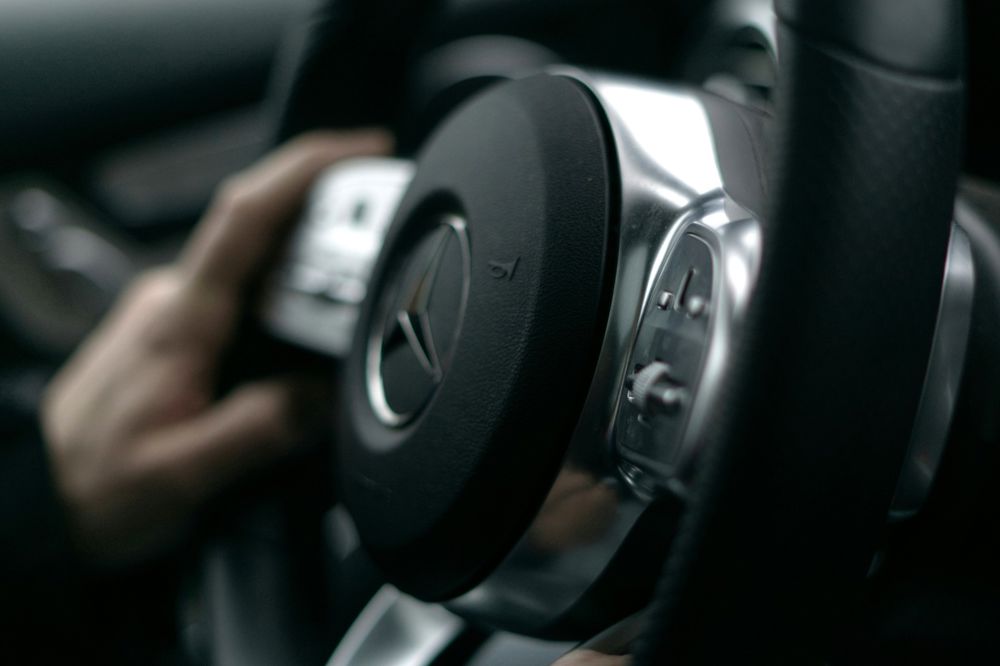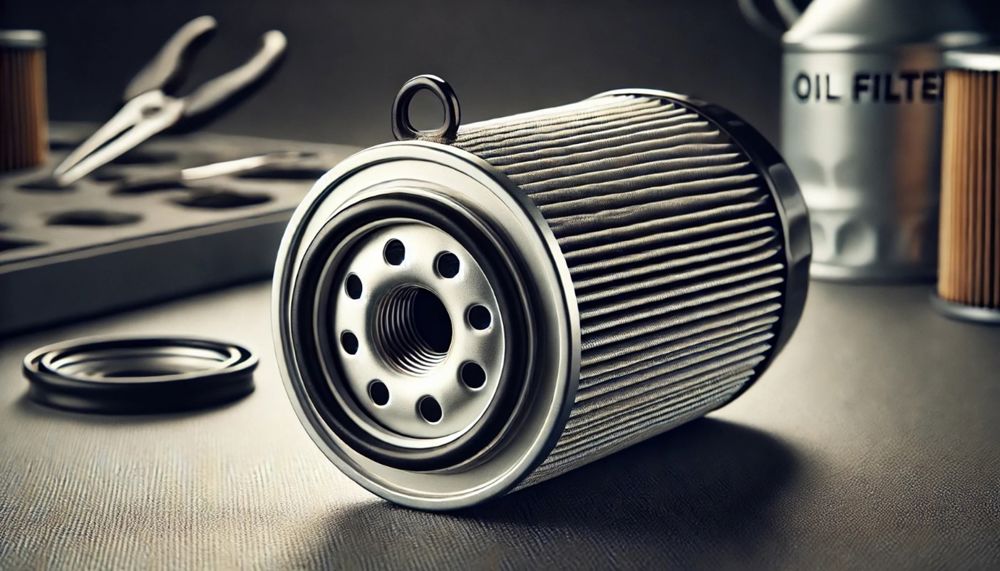
 21st May 2025
21st May 2025
The Complete Guide to Car Aerials
If you’ve had trouble tuning into your favourite radio station recently, your car aerial might be to blame! Though only a small part of a vehicle and often overlooked, car aerials, also referred to as antennas, play a big role in keeping you connected on the road.
In this guide, we’ll walk you through the different types available, explain how they work, their pros and cons and highlight common issues that could mean it’s time for a replacement.
How do car aerials work?
A car aerial works much like any regular antenna. It picks up electromagnetic waves from a transmitter, usually a radio station, and sends them to the car’s radio receiver, which converts them into tiny electric charges. The receiver then isolates and amplifies the radio signals you want to hear. Which wavelengths your aerial picks up most effectively, depends on its design. The main challenge is getting those electrical signals to your radio with minimal loss. This means that the higher the quality of your car aerial, the better your reception and coverage will be.
Types of car aerials, pros & cons and common issues
Mast antennas
Mast antennas are the classic “stick-style” antennas you’ll often see on older cars. They’re usually mounted on the front panel, roof or back of the car and come in three types:
- Fixed mast: a solid, non-retractable rod
- Telescopic mast: can be manually extended or collapsed as needed
- Power antenna: automatically extends and retracts when the radio is turned on or off
Pros
- Great for picking up signal in both urban and more rural areas
- Retractable versions help prevent damage or vandalism
- Easy to replace
Cons
- Being external, they’re more vulnerable to wear and tear unless retractable
- Looks outdated, especially with the design of modern cars

Common Issues
- Bent/broken mast: Mast antennas are prone to damage from car washes, low-hanging branches and other accidental impacts. A bent or snapped mast significantly reduces signal quality, and in some cases, the antenna may even come off completely.
- Corrosion: Since mast antennas are usually made of metal and exposed to the elements, they can develop rust over time, particularly in rainy or snowy weather. This can interfere with signal transmission and eventually lead to failure. We therefore recommend regularly inspecting and cleaning your antenna with a soft cloth to help extend its life.
- Power antenna malfunctions: Power antennas rely on a small electric motor and a gear mechanism to extend and retract. Over time, the motor can wear out or become jammed due to dirt, ice or internal wear. Keeping your antenna clean and avoiding any excessive force can help prevent these problems.
Internal aerials
Most newer cars have an internal antenna cleverly incorporated into the vehicle’s body, commonly into the rear or side windows. In some models, the fine lines you see on the rear defroster also serve as the antenna. This clever design eliminates the need for any visible, external components and gives the car a cleaner, sleeker appearance.
As technology improved and costs have dropped, internal aerials have become increasingly popular, especially in new and high-end vehicles where aesthetics are prioritised.
Pros
- Protected from external damage: No exposure to weather, car washes or vandalism
- Keeps your car looking clean and modern
Cons
- Reception isn’t always as strong, especially in areas with poor coverage
- Generally limited to AM/FM functionality
Common issues
- Interference with other systems: Some internal antennas, especially those close to other electronic components, can sometimes cause interference with other systems, like Bluetooth or GPS. Make sure that your antenna is properly installed and not interfering with any other equipment. If the problem persists, consider a different type of aerial.
- Damage from window tinting: Applying window tint can accidentally damage the antenna wires, impacting FM radio quality. If this is the case, the tint may need to be removed, and the antenna lines repaired with a conductive paste.
Shark fin aerials
Shark fin aerials are the small, fin-shaped pods mounted on the roof of many modern vehicles, typically centred near the back. They’re called shark fins because, well, they look like one!

This type of antenna is popular because of its sleek, low-profile design that complements most contemporary car models. But shark fin antennas are more than just a design choice as they’re an all-in-one, often capable of supporting a wide range of signals, including:
- AM/FM radio
- DAB (Digital Audio Broadcasting)
- GPS navigation
- GSM and 4G for mobile connectivity and hands-free calling
Some models feature a small internal or external whip antenna, either built into the fin or protruding from it, to help improve reception. Certain versions, like this one, can even be painted to match your car’s colour for a more seamless look.
Pros
- Modern, aerodynamic appearance, blending into the vehicle’s design
- Durable and less prone to damage compared to mast antennas
- Multi-purpose, suitable for more than just radio
Cons
- Slightly reduced AM/FM reception in remote or low-signal areas
- Typically more expensive and complex to replace
Common issues
- Poor signal reception: Shark fin antennas are compact, and while they’re extremely versatile, their performance for certain signals, especially AM/FM or DAB in remote areas may not always match that of mast aerials. To improve reception, make sure your antenna is designed to support all the functions you need, and upgrade to a higher-quality unit or one with an integrated mast.
TDC Automotive offers a selection of car aerials. If you’re looking for the right one for your vehicle and are not sure which one you need, use our part-finder or call us today on 01935 829671 for expert advice.




